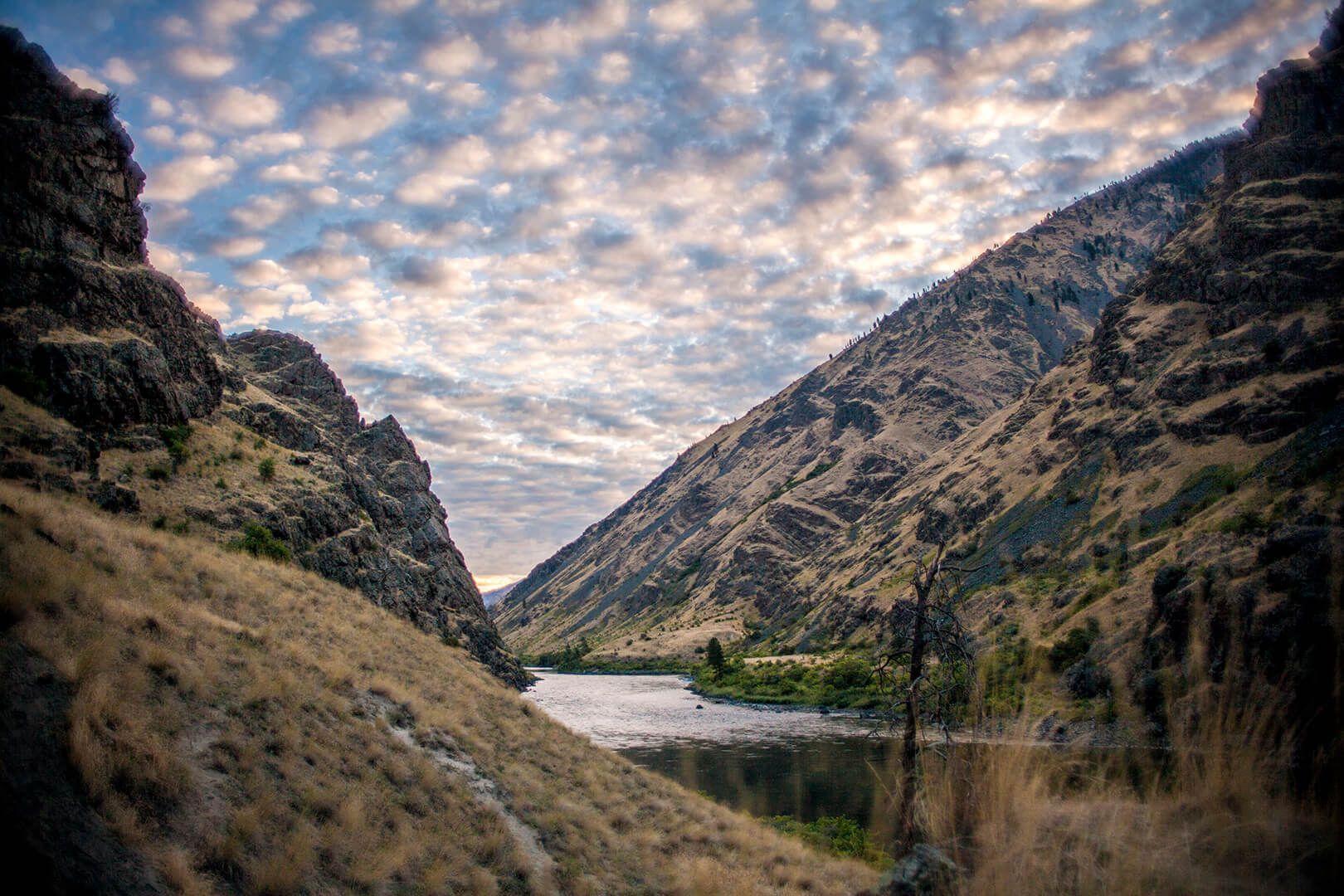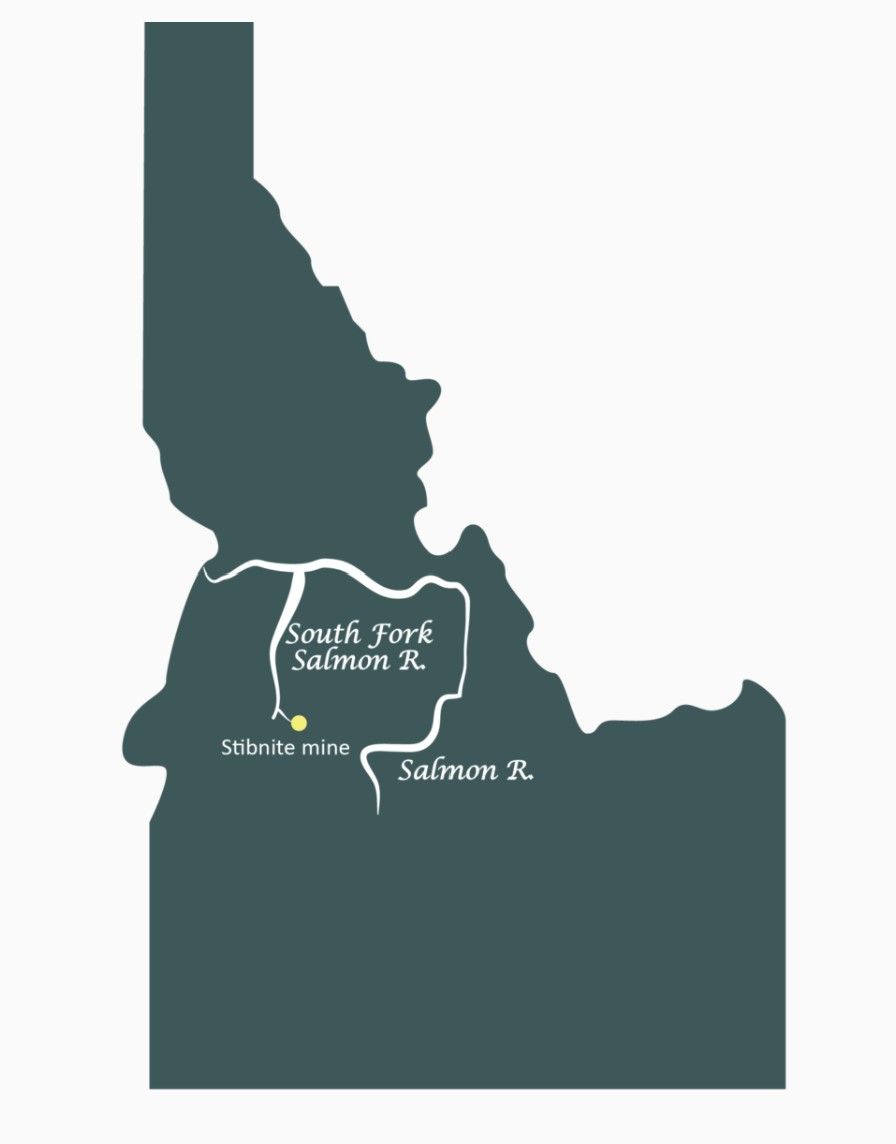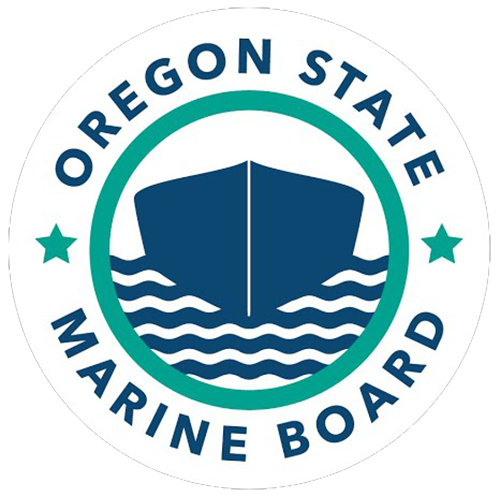The Future of Our Rivers
Do You Love River Life? Help protect it for the future
“ If a man fails to honor the rivers, he shall not gain the life from them. ” ~ Code of Hammurabi 1772 B.C.
Key Takeaways
- Rivers symbolize life and renewal, serving as vital ecosystems that sustain people, wildlife, and culture while offering recreation and reflection.
- Historic victories like the protection of Hells Canyon and the Wild and Scenic Rivers Act show how public advocacy can stop industrial threats and preserve river habitats for future generations.
- Modern conservation challenges, such as the Stibnite Gold Project, highlight the need for ongoing vigilance to prevent pollution and safeguard tributaries that feed protected rivers.
- River conservation benefits everyone, from indigenous communities and anglers to hunters and outdoor enthusiasts, by maintaining biodiversity and protecting cultural traditions tied to the water.
- Supporting groups like American Whitewater and Western Rivers Conservancy through donations or recreation helps keep rivers in public hands and ensures their long-term protection.
- Exploring rivers responsibly through guided rafting trips builds personal connection and awareness—turning every adventurer into an advocate for cleaner, freer-flowing waterways.
Rolling rapids, refreshing dips, and canyon walls glowing at sunset — these aren’t just scenes from adventure stories. These are parts of a precious river habitat worth saving. Rivers bring us closer to nature and to ourselves. For many, they represent freedom, vitality, and life — but what do rivers symbolize to you? Whether you're kayaking through flowing rivers or soaking in the stillness, you're engaging with a resource that touches every life it meets. From drinking to agriculture, from energy to recreation, we all take from the river. And without stewardship, we risk losing this source of joy and survival.
River Symbolism and Meaning
People often ask: what does the river symbolize in stories, cultures, and our lives? Rivers are often seen as symbols of life, purity, movement, and renewal. From indigenous traditions to modern conservation movements, rivers are central to our physical and emotional well-being.
History of River Conservation in the West
The three rivers that we run today, the Snake river in Hells Canyon, the Lower Salmon, and the Grande Ronde, have not always been protected resources. Historically, the integrity of these rivers have been threatened by industrial interests, pollution, and dam projects.
One of the most controversial dam projects in U.S. history was proposed in 1958 on the Snake River in Hells Canyon. The Pacific Northwest Power Company aimed to build a dam located a few miles above the confluence of the Snake and Salmon rivers. The ambitious project, called the High Mountain Sheep Dam, was set to rise 670 feet above the riverbed of the Snake, so tall that fish passage would be impossible and anadromous fish runs in Hells Canyon would disappear . The dam would have buried the wild waters of Hells Canyon as we know it in a 50-mile long reservoir. However, competing dam proposals from the Washington Public Power Supply System and the Department of the Interior delayed the construction of the High Mountain Sheep Dam. The Pacific Northwest Power Company fought legal battles for the construction of the dam that led all the way up to the Supreme Court.
As the legal battles for dam construction made headlines, concern for the future of Hells Canyon caught public interest. By the 1960’s, the environmental movement was on the rise and big industrial projects that threatened wild places started to become unpopular among the American public . The growing interest in environmental conservation and outdoor recreation swayed the Supreme Court to rule in favor of neither dam proposals, and instead rule in the favor of public interest. Ultimately, the dam was not constructed, but the movement to protect the Snake River in Hells Canyon did not stop there. The efforts to save this segment of river from damming inspired President Gerald Ford to designate Hells Canyon as a National Recreation Area in 1975, so that no industrial threat could endanger Hells Canyon in the future.
The Legacy of River Advocates
From environmentalists to ranchers, many have fought to keep these areas wild. Ranchers still graze land responsibly, continuing the rivers foundation of stewardship and co-existence. Their understanding of how does still water happen, and how to keep it clean and balanced, is vital to maintaining this delicate ecosystem.
The fight to save Hells Canyon inspired a
legacy of conservation efforts
and birthed a generation of senators who put environmentalism at the core of their policies. These environmentally conscious senators helped usher in the
Wild and Scenic Rivers act of 1968
. This groundbreaking legislation legally recognized rivers as valuable in their natural state. The act honors rivers for their “outstandingly remarkable scenic, recreational, geologic, fish and wildlife, historic, cultural or other similar values,” and protects them in their wild condition. Today, the Grande Ronde and Hells Canyon are designated as Wild and Scenic Rivers. The Lower Salmon, however, is not protected by the Wild and Scenic Rivers Act, and is one of the reasons you will see private housing and remote roads along the riverside.
Unfortunately, big wins for conservation often come at a big cost for caretakers of the land. The designation of Hells Canyon as a National Recreation Area forced out the ranchers and homesteaders whose livelihoods depended on the land. The rich history of homesteading in Hells Canyon can still be seen today in the form of hay barns, homes, and farming equipment that were left behind. However, their long legacy of land stewardship continues today. Ranchers are still permitted to graze their cattle in certain sections of Hells Canyon, a practice that has existed in the canyon for hundreds of years . Their holistic grazing practices promote the growth of native bunch grasses, which are important to maintaining biodiversity in the region. The rancher’s love and care for the land continues to be an integral part of land management in Hells Canyon today.
Current Conservation Issues
Although we have seen some great wins in the history of river conservation, we still have a lot of work to do if we want to keep our rivers protected for the future. Not all rivers enjoy equal protection. Even now, threats like the Stibnite Gold Project endanger vital
water from the river sources. Our rivers are constantly in jeopardy from private industrial interests. Even if a river is protected, its tributaries may not be, making the protected river vulnerable to industrial threats upstream.
This is the case with the Stibnite Gold Project, proposed earlier this year on the South Fork Salmon. Midas Gold, a Canadian mining company, plans to create one of the nation’s largest gold mines, located on the headwaters of the South Fork Salmon. The South Fork Salmon flows into the Main Salmon River and connects to the majority of the Salmon River Watershed. If completed, the mine will leach toxic sludge into the South Fork. Much of the commercially run stretch of the Salmon, including the beloved lower salmon where we run trips, is downstream on the South Fork confluence and will suffer from the pollution. New private interests like the Stibnite Gold Project are why we must be vigilant in our advocacy for clean and free-flowing rivers. You can learn more about the Mining Project and take action to stop it here: Save the South Fork Salmon .
ecosystem Support and Cultural Connection
From river watchers to anglers and hikers, river users know the critical role these ecosystems play. Healthy river decor — lush banks, thriving species, and clean flow — isn’t just scenic; it supports countless species.
For indigenous groups like the Nez Perce, rivers are more than resources. They are rivers of information, linking history, culture, and survival. Safeguarding these spaces protects treaty rights and honors traditions that go back millennia.
Who Benefits from River Conservation?
River conservation does not only benefit us river rats. The wildlife and biodiversity that are unique to river corridors are also enjoyed by hunters and anglers. River conservation not only protects the water, but also the land around it, allowing wildlife a space to thrive. On the rivers we run, the surrounding canyons are popular among hunters for its wide range of game, from small pheasants known as chukars to big game such as elk and bighorn sheep. River corridors provide wildlife protection from harsh weather, and allow them to access food and water in the scarcity of winter. Keeping our river corridors protected is critical to maintaining healthy ecosystems so that the long tradition of hunting in these areas can survive.
River conservation is also critically important to anglers who rely on healthy fish populations. Historically, our native fish populations have suffered from the introduction of dams and industrial pollution in our rivers. River conservation prevents the construction of new dams, which allows fish safe passage and protection from predators, and sets clean water standards so that fish are safe to eat.
These conservation efforts are particularly important to indigenous groups such as the Nez Perce, who have fished the waters of the Snake and Salmon for
thousands of years
. Fish harvesting has long been an
important part
of Nez Perce diet and culture. However, historically important native fish such as salmon and steelhead are currently listed as
threatened or endangered
. Clean and free-flowing rivers are critically important to conserving these populations that have long been
culturally significant
to the Nez Perce. Safeguarding the
treaty rights
and fishing practices of indigenous groups is yet another reason why river conservation is so important in our area.
Champions of Conservation
Victories in river conservation would not be possible without the relentless work of non-profit groups like American Whitewater and the Western Rivers Conservancy . These organizations advocate for the health of our rivers, and help keep them in public hands for public use. Without them, our rivers would not be the pristine and remote wilderness landscapes that we enjoy today.
At Winding Waters River Expeditions, we have developed a partnership with the Western Rivers Conservancy. Every year we donate the proceeds from our Music for Wild Places trips to their cause. Their work depends on funding from people who love rivers and care about their health and protection for the future. If you are interested in keeping this important work going, you can donate here: Western Rivers Conservancy , American Whitewater .
Other than advocacy work, one of the best ways to protect our river corridors is to use them! Being a river recreationist is a means of conserving them as wild places. The more people who develop a connection with these rivers, the more likely we are to keep them protected. So, invite your friends and extended family on a trip, and share these beautiful places with those you love. Come and enjoy what the long legacy of river conservation has to offer.
Frequently Asked Questions
Learn more about the history, meaning, and protection of our rivers — and how we can all play a part in preserving them for the future.
What does a river symbolize?
Rivers often symbolize life, renewal, and connection. Across cultures, they represent both physical sustenance and spiritual flow — the passage of time, transformation, and the interconnectedness of all living things. To many, rivers are a metaphor for movement, cleansing, and the continuity of nature.
Why are rivers important to humans and the environment?
Rivers provide clean drinking water, irrigation for crops, habitats for wildlife, and renewable energy. They also offer recreation, inspiration, and cultural significance. Without healthy rivers, ecosystems collapse, fish populations decline, and communities lose both natural resources and spiritual connection to the land.
What is river conservation?
River conservation involves protecting and restoring rivers and their ecosystems. This includes keeping waters clean, preventing industrial pollution, managing land use responsibly, and ensuring fish and wildlife can thrive. Conservation efforts also safeguard the recreational and cultural value of rivers for future generations.
What is the Wild and Scenic Rivers Act?
The Wild and Scenic Rivers Act, passed in 1968, protects rivers that have outstanding natural, cultural, and recreational values. It prevents dam construction and industrial exploitation, ensuring that designated rivers — like the Snake and Grande Ronde — remain free-flowing and accessible for public enjoyment and ecological balance.
What was the High Mountain Sheep Dam project?
Proposed in 1958, the High Mountain Sheep Dam was a massive hydroelectric project planned for the Snake River in Hells Canyon. If built, it would have blocked fish passage and flooded much of the canyon. Public opposition and environmental advocacy led to the project’s cancellation — a major victory for river conservation.
How do ranchers contribute to river stewardship?
Ranchers in regions like Hells Canyon have practiced sustainable grazing for generations. By managing cattle responsibly, they help maintain native grasses, prevent erosion, and support biodiversity. Their ongoing stewardship demonstrates that agriculture and conservation can coexist in balance with the natural environment.
What threats do rivers face today?
Modern threats include industrial mining, pollution, and overdevelopment. Projects like the Stibnite Gold Mine on the South Fork Salmon risk contaminating entire watersheds. Even protected rivers remain vulnerable if their tributaries are exposed to toxic runoff, making ongoing vigilance and advocacy essential.
Why is the South Fork Salmon River at risk?
The proposed Stibnite Gold Project would mine near the headwaters of the South Fork Salmon, threatening to release toxins into the watershed. This pollution could harm fish habitats and recreation areas downstream, including the popular Lower Salmon. Protecting the South Fork ensures the health of the entire river system.
How does river conservation help wildlife and fish?
Healthy, free-flowing rivers support diverse ecosystems. Removing or preventing dams allows fish like salmon and steelhead to migrate freely, while clean water standards ensure safe habitats. Protecting river corridors also shelters animals from harsh conditions and supports native plants that sustain the food chain.
What role do Indigenous communities play in river protection?
For Indigenous nations like the Nez Perce, rivers are sacred sources of life and culture. Their fishing traditions and treaty rights are deeply tied to river ecosystems. Conservation efforts that protect clean water and healthy fish populations also honor these longstanding relationships and cultural practices.
How can I help protect rivers?
You can support conservation by donating to organizations like Western Rivers Conservancy and American Whitewater, joining advocacy campaigns, or simply spending time on the river. Recreation builds connection — and connection drives protection. Every paddler, angler, and hiker helps keep rivers wild by caring about their future.
Why does rafting support river conservation?
Rafting fosters appreciation for rivers as living systems. By exploring them responsibly, visitors become advocates for their protection. Guided trips like those offered by Winding Waters River Expeditions combine adventure with education, turning outdoor experiences into lasting commitments to preserve wild waterways.
Final Reflection – The River’s Role in Our Lives
Whether you're pondering river action through rafting or teaching kids to identify three sources of water that can become a stream, one thing is clear: rivers touch every part of life.
From the river habitat to the people it feeds and inspires, the river is a symbol of unity, continuity, and hope. For every person wondering why is river important, the answer lies in the ripple of water, the flight of the heron, the laughter of children by the banks.
Come Paddle With Us
If you’re ready to embrace the wild spirit of rivers, join us for an unforgettable journey. Winding Waters offers guided Whitewater Raftings on some of the most spectacular rivers in the West — from Hells Canyon to the Lower Salmon.
When you raft with us, you’re not just riding rapids — you’re becoming part of a movement to protect rivers for future generations. Bring your friends, your family, and your curiosity. Let’s explore and protect the river together.
Book your guided rafting trip now with Winding Waters River Expeditions — where adventure meets advocacy.
Don’t just take our word for it—visit our
Google Business Profile Reviews and see why Winding Waters white water rafting trips keep guests coming back!











